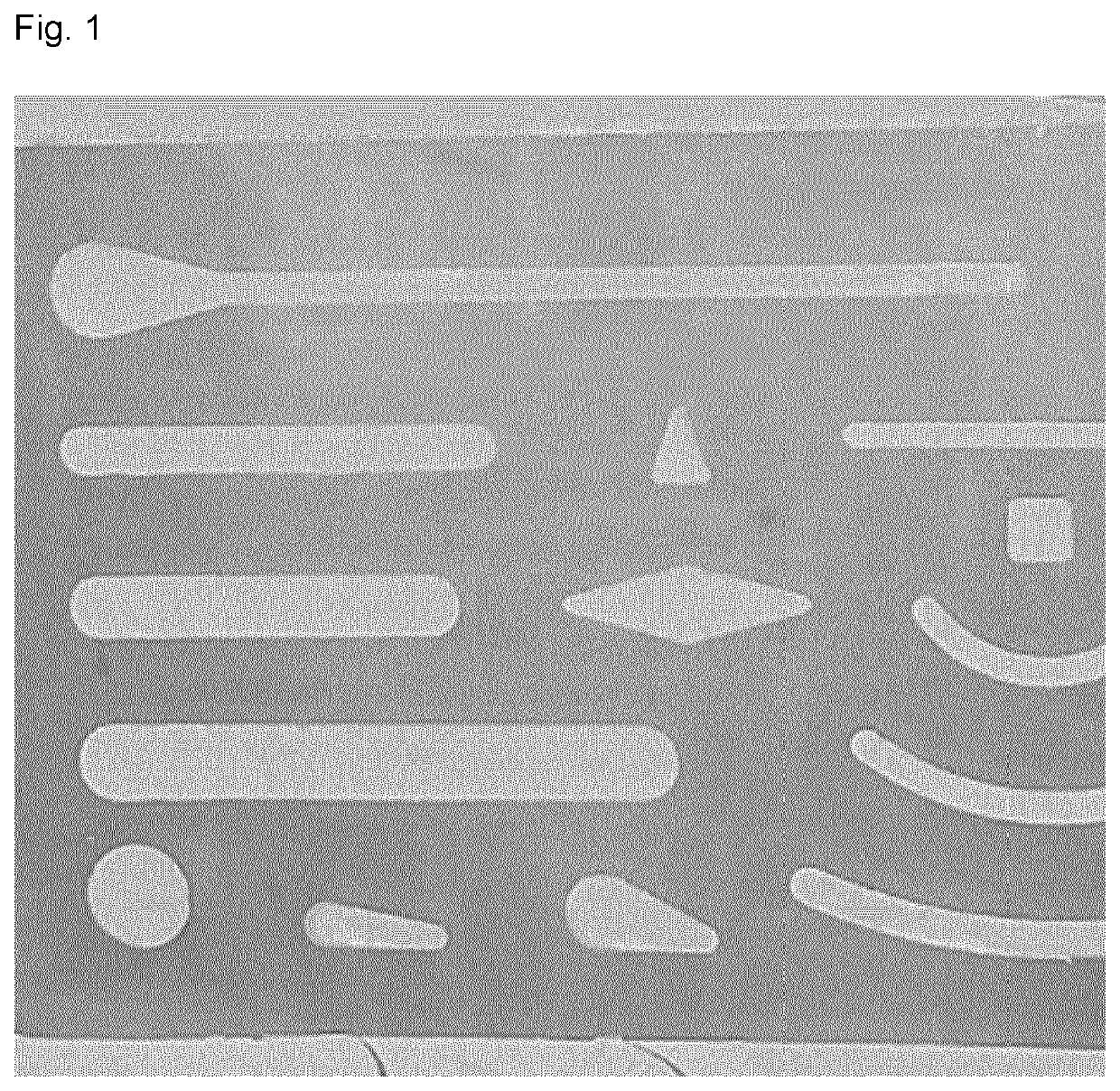Film, capsule and film-forming composition comprising water-soluble salt as opacifying agent
a technology of opacifying agent and film, which is applied in the direction of capsule delivery, ink, inorganic non-active ingredients, etc., can solve the problems of difficult to keep a coating state, loss of stability of components blended in these medicines and cosmetics, and loss of quality maintenance, etc., to achieve excellent solubility, stable whiteness or opacity for a long time, the effect of whiteness or opacity
- Summary
- Abstract
- Description
- Claims
- Application Information
AI Technical Summary
Benefits of technology
Problems solved by technology
Method used
Image
Examples
example 1
[0064]To an about 34% gelatin solution, an aqueous solution containing 5 parts by weight of sodium polyphosphate relative to 100 parts by weight of the gelatin was added to prepare a film-forming aqueous solution. This solution was poured on a glass plate applied with a release agent and heated to about 60° C. and dried at room temperature to form a white film.
example 2
Colorability of Film
[0065]To an about 34% gelatin solution, an aqueous solution containing 5 parts by weight of sodium polyphosphate and 1 part by weight of gardenia red colorant relative to 100 parts by weight of the gelatin was added to prepare an aqueous film-forming solution. This solution was poured on a glass plate applied with a release agent and heated to about 60° C. and dried at room temperature to obtain a colored film.
[0066]To an about 34% gelatin solution, an aqueous solution containing 5 parts by weight of sodium polyphosphate and 1 part by weight of gardenia blue colorant relative to 100 parts by weight of the gelatin was added to prepare an aqueous film-forming solution. This solution was poured on a glass plate applied with a release agent and heated to about 60° C. and dried at room temperature to obtain a colored film. In both cases, it was confirmed that an opaque colored film is prepared.
[0067]All salts above were used in an amount of 2.5 parts by weight relativ...
example 3
Ink Liquid Composed of Film-Forming Composition Containing an Pacifying Agent
[0068]An ink liquid containing gelatin as the film-forming polymer and an opacifying agent, as shown in the following Table 2 was prepared.
TABLE 2Formulation of ink liquidFormulationGelatin100Sodium7.5polyphosphateWhite ratio⊚Degree of whiteness⊚PeelingNone
[0069]The white ratio and degree of whiteness were visually evaluated, and the criteria were as follows.
[0070]The “white ratio” represents the area percentage of whitened parts regardless of the “degree of whiteness” and the “degree of whiteness” refers to the density of a white-looking portion.
[0071]White ratio: ⊚ 100 to 90%
[0072]Degree of whiteness: ⊚ pure white
[0073]To an about 34% gelatin solution, an aqueous solution containing 7.5 parts by weight of sodium polyphosphate relative to 100 parts by weight of the gelatin was added to prepare a film-forming aqueous solution. Using a template having pattern cuts, patterns were printed and heat-dried at 60°...
PUM
| Property | Measurement | Unit |
|---|---|---|
| particle size | aaaaa | aaaaa |
| temperature | aaaaa | aaaaa |
| water-soluble | aaaaa | aaaaa |
Abstract
Description
Claims
Application Information
 Login to View More
Login to View More - R&D
- Intellectual Property
- Life Sciences
- Materials
- Tech Scout
- Unparalleled Data Quality
- Higher Quality Content
- 60% Fewer Hallucinations
Browse by: Latest US Patents, China's latest patents, Technical Efficacy Thesaurus, Application Domain, Technology Topic, Popular Technical Reports.
© 2025 PatSnap. All rights reserved.Legal|Privacy policy|Modern Slavery Act Transparency Statement|Sitemap|About US| Contact US: help@patsnap.com

